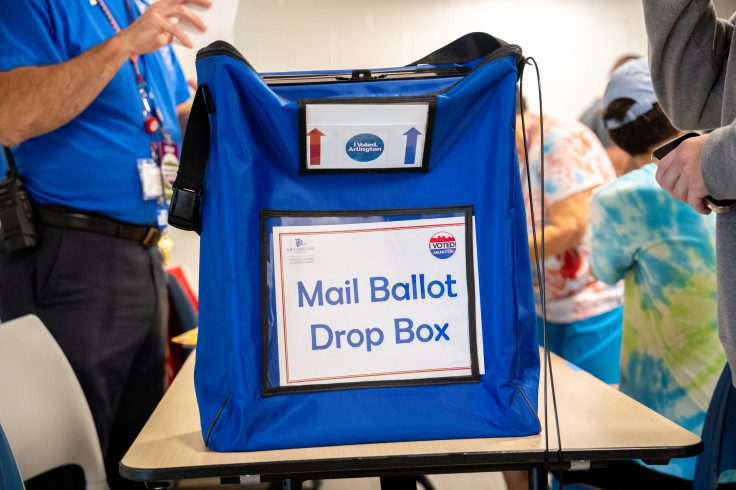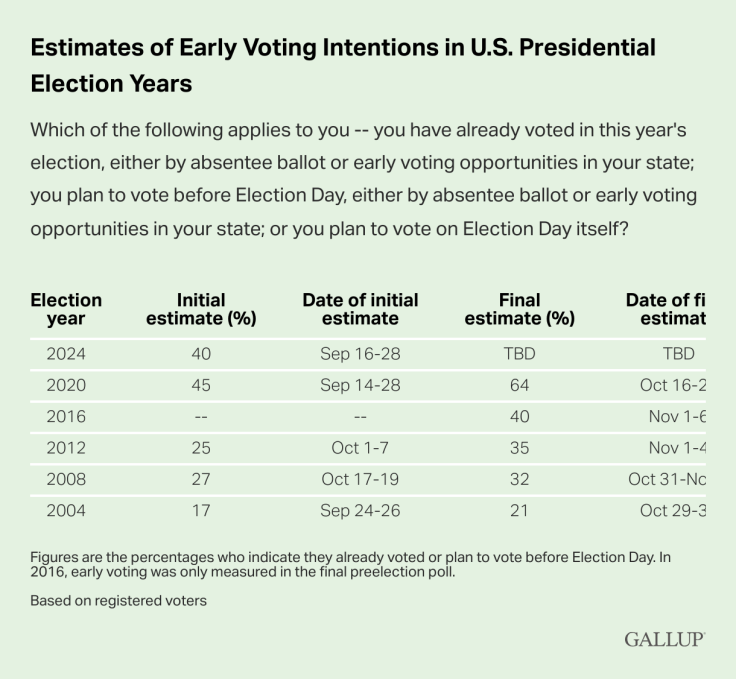
SEATTLE - With Election Day less than a month away, many states around the U.S. have already started receiving mail-in ballots. The practice became widespread in the 2020 election, as the COVID-19 pandemic remained in full swing, which led to over 100 million voters casting their ballots by mail or in person before Election Day.
Early voting lets people cast their ballots in advance and it is a practice common in many states, though some have that option restricted. With mail-in voting, people can request a ballot be sent to them or, in some cases, automatically receive one. Eight states, including California and Nevada, send mail-in ballots to all registered voters.
Historically, voters who were unable to make it to the polls on Election Day had to request an absentee ballot. But with the introduction of mail-in ballots, both now function effectively the same in many states. Although in 14 entities across the U.S. — including Texas, South Carolina and Indiana — voters must still provide a valid excuse to cast an absentee ballot.
As casting an early ballot continues to gain popularity across the country, a recent survey found that 40% of U.S. registered voters, as of late September, either plan to vote before Election Day or have already voted. Although that number is still lower than the 2020 figures during the height of the coronavirus pandemic, the proportion of early voters this year is the same as or higher than those captured in other recent election years.
Early voting intentions have increased over the course of every presidential election campaign since 2004. This year, the percentage of early voters could approach or exceed 50% by the end of the election campaign, according to data from Gallup.

Those findings are correlated to what an NBC News poll found last month, as The Latin Times shared that half of registered voters planned to vote early ahead of the November elections.
The study revealed that 51% of voters say they will vote early, either by mail or in person, with Vice President Kamala Harris leading former President Donald Trump 61%-35% among those voters, the NBC News report shows.
Conversely, Trump leads 20 points, 57%-37%, with the group of voters who plan to vote on Election Day, which accounts for 45% of the electorate in the poll. The study suggests that those figures represent a smaller lead among a slightly smaller share of the electorate than Harris over those early voters.
According to data from the Gallup poll, more Democrats say they plan to vote before November 5. The current 15-percentage-point partisan gap in early voting intentions -- 46% for Democrats, 31% for Republicans -- is similar to the 18 points that separated Democrats and Republicans at the end of the 2020 campaign.
In-person voting expected to be higher in 2024 than in 2020
Despite the growing popularity of early voting, Gallup expects the total of in-person voters in 2024 to surpass that of 2020.
According to the poll, 69% of registered voters plan to cast their ballots in person while 21% plan to vote by mail. This represents a significant decrease in mail voting (35% in 2020) and an increase in in-person voting (60%) compared with four years ago.
That shift is more apparent among Democrats, as the percentage of mail voters is down by 20 points compared to the 47% in 2020 that voted via mail.
Republicans remain the group most likely to vote in person, with about three-quarters planning to do so, slightly higher than in 2020.
© 2025 Latin Times. All rights reserved. Do not reproduce without permission.







